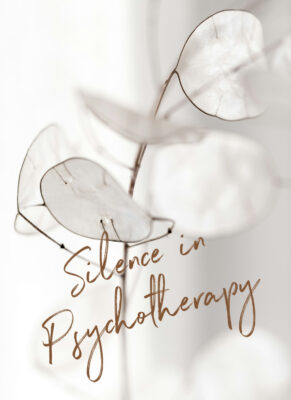In my most recent session of the Peer Supervision Series: Expanding the Therapist’s Interior Landscape, sponsored by Onlinevents, we discussed the role of silence in psychotherapy and how silence plays out during the therapy hour.
In our workshop today, I asked everyone to think of a recent client session. I had the group engage in contemplative writing, instructing them to write or type for 5 minutes, whatever came to the surface and not to stop- stream of consciousness- automatic writing- also known as active imagination and contemplative writing.
The prompt for the first 5 minute writing exercise:
How did I experience silence in the session? What emotions, sensations, or insights emerged for me and my client in that space?
After the writing experiences, they went into breakouts of 3 for 15 minutes to discuss what came up regarding their exploration of the session, followed by another 5 minute contemplative writing exercise.
The 2nd prompt:
What informed my decision to hold silence or break it? How did that choice shape the therapeutic moment?
These prompts encourage therapists to examine their relationship with silence—both its challenges and its transformative potential.
Again, after the writing exercise, they were placed into another 15 minute break out with 3 people to discuss.
Afterward we further examined the strength of silence in the therapeutic session.
Facilitator Thoughts
I explained that from my perspective, silence can sometimes be a palpable experience in the room. It can feel as if silence has a pulse. And in that silence, numinous moments can occur. When silence happens, we can listen, but listen to hear the story behind the silence, not listen to determine how we interrupt the silence. When silence happens, we can lean in.
We also briefly discussed non-local presence. Silence carries a presence of its own, whether in an in-person consultation or an online exchange through audio, video, chat, or email. Even in virtual spaces, its impact remains palpable. Silence can feel like presence.
A Neo-Jungian Perspective
From a Neo-Jungian perspective, silence in psychotherapy is not merely an absence of words but a living space where the unconscious can emerge. Rooted in depth psychology, Neo-Jungian thought sees silence as a numinous container, allowing symbolic material, archetypal energies, and affective states to surface without immediate interpretation or intervention. Within this quiet expanse, both therapist and client can witness the psyche’s spontaneous expressions—through imagery, bodily sensations, or an unspoken shift in the relational field.
Silence also serves as a threshold between the ego and the deeper layers of the psyche, inviting the client into a more authentic dialogue with the Self. When held with presence, it fosters an alchemical process where the unsaid becomes as potent as the spoken. The therapist’s capacity to remain with silence—rather than rush to fill it—reflects an attunement to the symbolic and imaginal realms, where meaning unfolds organically rather than being imposed. In this way, silence becomes a bridge to the unconscious, a womb-like holding space where transformation can take root.






